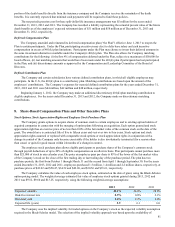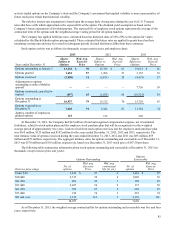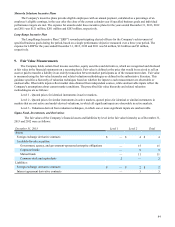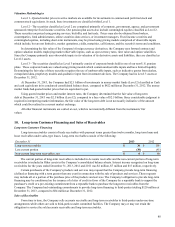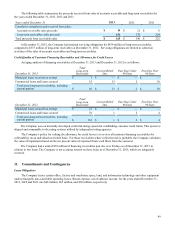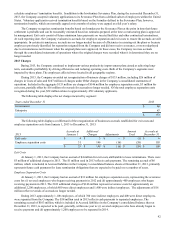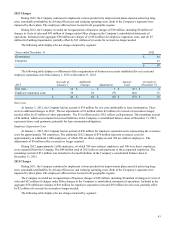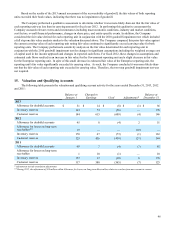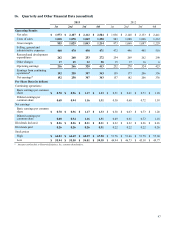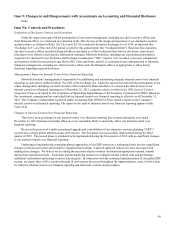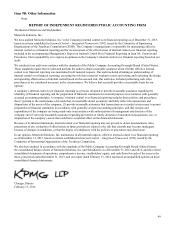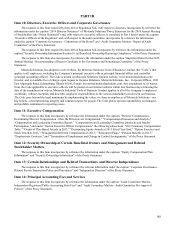Motorola 2013 Annual Report Download - page 92
Download and view the complete annual report
Please find page 92 of the 2013 Motorola annual report below. You can navigate through the pages in the report by either clicking on the pages listed below, or by using the keyword search tool below to find specific information within the annual report.
90
At December 31, 2013, future minimum lease obligations, net of minimum sublease rentals, for the next five years and
beyond are as follows:
Year
2014 $ 99
2015 71
2016 56
2017 44
2018 34
Beyond 187
Purchase Obligations
During the normal course of business, in order to manage manufacturing lead times and help ensure adequate component
supply, the Company enters into agreements with contract manufacturers and suppliers that either allow them to procure
inventory based upon criteria as defined by the Company or establish the parameters defining the Company’s requirements. In
addition, we have entered into software license agreements which are firm commitments and are not cancelable. As of
December 31, 2013, the Company had entered into firm, noncancelable, and unconditional commitments under such
arrangements through 2016. The Company expects to make total payments of $56 million under these arrangements as follows:
$49 million in 2014, $5 million in 2015, and $2 million in 2016.
The Company outsources certain corporate functions, such as benefit administration and information technology related
services. These contracts are expected to expire in 2017. The remaining payments under these contracts are approximately $485
million over the remaining life of the contracts; however, these contracts can be terminated. Termination would result in a
penalty substantially less than the remaining annual contract payments. The Company would also be required to find another
source for these services, including the possibility of performing them in-house.
Legal
The Company is a defendant in various suits, claims and investigations that arise in the normal course of business. While
the outcome of these matters is currently not determinable, the Company does not expect the ultimate disposition of these
matters will have a material adverse effect on the Company’s consolidated financial position, liquidity or results of operations.
Indemnifications
The Company is a party to a variety of agreements pursuant to which it is obligated to indemnify the other party with
respect to certain matters. In indemnification cases, payment by the Company is conditioned on the other party making a claim
pursuant to the procedures specified in the particular contract, which procedures typically allow the Company to challenge the
other party's claims. In some instances, the Company may have recourse against third-parties for certain payments made by the
Company.
Some of these obligations arise as a result of divestitures of the Company's assets or businesses and require the Company
to indemnify the other party against losses arising from breaches of representations and warranties and covenants and, in some
cases, the settlement of pending obligations. The Company's obligations under divestiture agreements for indemnification
based on breaches of representations and warranties are generally limited in terms of duration, and for amounts for breaches of
such representation and warranties in connection with prior divestitures not in excess of a percentage of the contract value. The
Company had no potential claims at December 31, 2013.
In addition, the Company may provide indemnifications for losses that result from the breach of general warranties
contained in certain commercial and intellectual property agreements. Historically, the Company has not made significant
payments under these agreements.
In addition, pursuant to the Master Separation and Distribution Agreement and certain other agreements with Motorola
Mobility, Motorola Mobility agreed to indemnify the Company for certain liabilities, and the Company agreed to indemnify
Motorola Mobility for certain liabilities, in each case for uncapped amounts.



